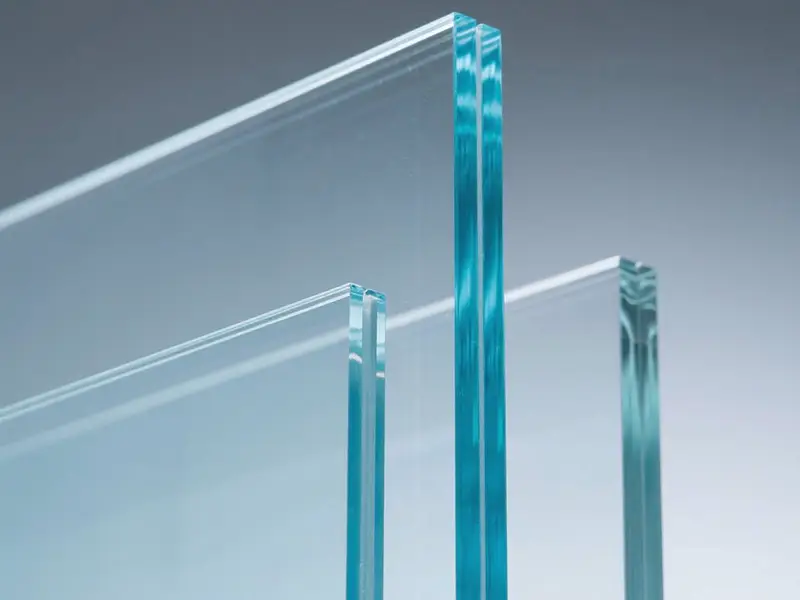The widespread application of tempered glass and its outstanding performance in various industries
From airplane windshields that can withstand bird strikes at 550 kilometers per hour to medical devices that can withstand a temperature difference of 200 ℃, tempered glass, with safety as its core, is reshaping modern life across boundaries - it is not only the invisible armor of skyscrapers, but also the energy-saving key of refrigerator doors, and guarding every touch of the digital world on mobile screens.
Tempered glass has played a crucial role in various fields such as aviation, construction, automotive, and home appliances since its inception. It is not only widely used for safety protection, but has also evolved into a building enclosure material, structural material, and even a core material in the manufacturing of automobiles, electronic products, and furniture. In the aviation industry, tempered glass is used to manufacture composite structural glass, which has excellent impact resistance and can withstand high-speed bird strikes. In aircraft manufacturing, tempered glass is often used to construct composite structural glass. These glass structures are combined with organic glass to form organic and inorganic composite laminated glass, or combined with inorganic glass to form all sky composite laminated glass. In addition, by coating the glass surface, special functional glasses such as electric heating anti icing and defogging glass and stealth glass can be further made. The excellent impact resistance of tempered glass enables composite glass to effectively resist bird impact at speeds of 550 kilometers per hour.
The demand for glass in modern architecture has gone beyond simple lighting functions, encompassing multiple functions such as safety, energy efficiency, aesthetics, sound insulation, and large-scale design. Tempered glass is used as safety glass in buildings to meet multifunctional requirements, ensuring the safety of buildings with its high impact resistance and thermal stability. Tempered glass shines brightly in modern architecture with its excellent safety performance. In order to ensure public safety, many countries have put forward strict standards for the use of glass in buildings, stipulating that safety glass must be used in key areas such as glass windows, doors, barriers, partitions, bathrooms, and stair guards in public buildings. The high impact resistance and excellent thermal stability of tempered glass make it an ideal choice for building glass components, as well as greenhouse and ceiling glass. Tempered glass is often used as unsupported protective panels on building stairs, and its strong load-bearing capacity is also reflected in the overall structure of pedestrian overpasses. In addition, the high bending strength of tempered glass has been cleverly applied in the design of tower shaped support columns and shaped bases.
The development of automotive glass from thick tempered glass to various forms has improved ride comfort and applied low radiation technology to save energy. The booming development of the automotive industry has driven the continuous progress and application innovation of tempered glass technology. Early automotive glass was mainly made of thick tempered glass, but now it has gradually evolved into various forms such as thin tempered glass, coated glass, and special-shaped tempered glass. As car design increasingly pursues aesthetics, safety, energy efficiency, and comfort, tempered glass is also facing higher technological challenges. The streamlined integrated car design not only reduces driving resistance, but also provides car owners with a more private space and comfortable riding environment through the application of coated tempered glass. At the same time, the use of low radiation tempered glass effectively reduces the entry of solar energy in summer, thereby lowering the temperature inside the car and reducing the use of air conditioning.
Tempered glass is widely used in chemical and medical fields due to its heat and pressure resistance, improving the safety and durability of equipment. Tempered glass, due to its ability to withstand a temperature difference of 200 ℃, is widely used in the preparation of organic material forming plates and as a membrane plate. Meanwhile, its high bending strength and heat resistance make it an ideal choice for high-pressure vessel observation windows. The wear-resistant and heat-resistant properties of tempered glass make it widely used in multiple fields. For example, in the field of architecture, it can serve as protective glass for spotlights and floor lights, enhancing the durability of the lighting fixtures. Meanwhile, in the field of medical devices, tempered glass is used as a protective screen for shadowless lamps to ensure the smooth progress of surgeries. In addition, tempered glass is often used for heat-resistant glass screens in printing machinery to improve their heat resistance. In addition, public places such as museums, exhibition halls, shop windows, and commercial counters often use tempered glass to prevent glass from breaking and injuring people when impacted.
TAG:
Related Posts
How Glass Partitions Enhance Natural Light in Commercial Spaces










